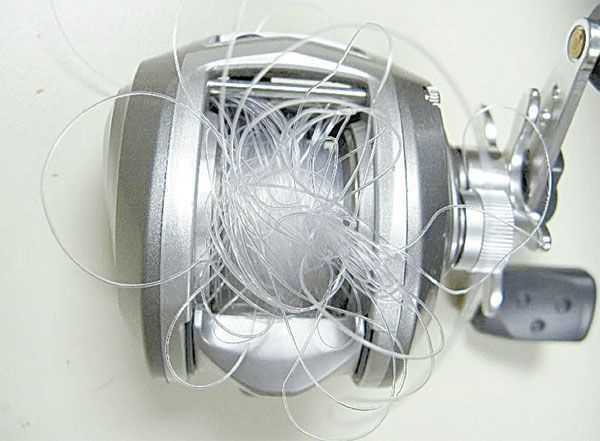Usually an angler’s worst nightmares show up at the most inopportune time possible. If you’ve ever spent much time behind the reel, I’m certain you’ve wondered why your fishing reels get backlashes. As for me, I thought if you fished, it was something you simply had to endure because you were an angler.
However, as you gain fishing experience and begin to understand more about the equipment you’re using and the theory behind this hair pulling aggravation called a backlash — they are actually really fairly simple to avoid. Saying this brings us to another source of understanding since there are several different models of fishing reels on the market and each one has its own idiosyncrasies to master. Bait casters, for example, are probably the worse — especially older models.
With a Bait Caster, the whole thing starts during a cast and ends when the spool over runs the line.
In other words, when casting a bait or lure, its weight, plus the forward motion of the cast, causes the spool to spin forward. As line is pulled off the spool it overcomes its stationary position and begins accelerating the speed of the spool.
Then as the lure or bait slows or lands in the water the natural inertia of spool continues spinning at an accelerated speed. It’s for this reason, some type of control is needed to first slow and then stop the spool. If this control is not exercised precisely at this critical point, the line continues unraveling on top of the spool, causing loops and twist and there it is our good old “backlash.”
The control needed to overcome the spinning spool can be anything from your thumb on older models to the latest technology which involves integrated braking systems or adjustable mechanical devices that enable the user to set and control spool speed.
Some even go so far as to manufacture reels with miniature computer boards that automatically control the spool.
This new technology doesn’t mean reels do everything for you. Even with the new controls compensating for spool speed it’s still a mechanical device requiring human input.
A good starting point when adjusting bait casters is to begin with a completely rigged rod, reel and the lure you’ll be casting. Here is the basic setup for spool adjustment:
1. Gently tighten the adjustment control knob until the spool does not turn when the release is pushed.
2. Holding the lure off the ground at approximately 45 degrees loosen the adjustment control until the lure starts to drop.
3. Finally, adjust the control knob to stop the spool the moment the lure hits the ground.
While this is a good starting point every angler has their own preference depending on their experience. These adjustments aid in preventing backlashes but remember… nothing works like practice.
Open Face Spinning Reels are relatively easier. However backlashes do occur, especially using the newer braided lines. Not the over-running spool scenario we’re accustomed on bait casters, it’s more a series of twist and loops associated with “loose wraps” on the spool. Avoiding this especially when using braid is fairly straightforward procedure and following the steps below will give you a definite heads up on avoiding spinning reel line fowling:
Following these few steps should help:
1. When making your cast, stop the line just as the bait hits the water.
2. An easy way to do this is placing you index finger on the spool. (takes a little practice, but once you get used to it you’ll find you use it to stop your line in all casting scenarios)
3. Once the bait our lure is in the water close the bail manually making certain the line is in the line roller.
4. Finally, always lift the rod to take up any slack before starting to reel.
Using these suggestions should improve your anti-backlash ratio. However, sooner or later you’re going to encounter that dreaded backlash or birds nest as often referred too. To get them out, start by gently pulling on the loops.
You’re looking for that specific one that caused this disaster. Continue lightly pulling and untwisting the loops, you’ll soon begin separating and untangling the line. It takes patience, but given the cost of braided line a little patience is worth it. Your worst case scenario means cutting the line. However, a simple double Uni-knot gets you back fishing in no time.
Accurate casting using either a bait caster or open face spinning reel comes with practice and no one likes to do it. However becoming proficient and consistently placing a lure or bait in an area the size of a basketball takes some effort and doesn’t happen overnight.
Well that’s about it for backlashes hopefully this gives some insight into what causes them and what you can do to correct them.
